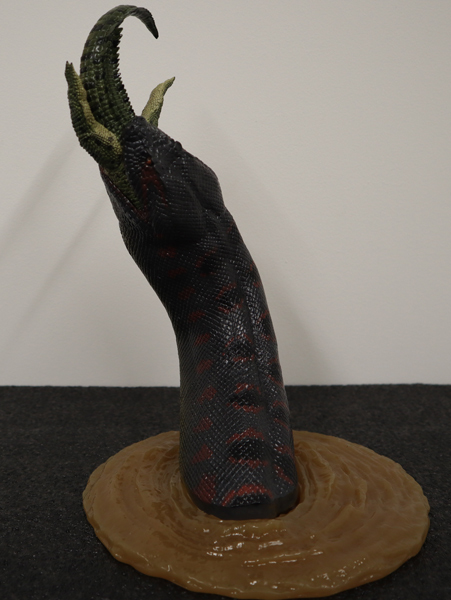“Clumped Isotopes” May Answer Important Question of Whether or Not Dinosaurs were Endothermic
Warm-blooded or Cold-Blooded Dinosaurs – “Clumped Isotopes” May Reveal the Answer
One of the key questions regarding Dinosauria and other extinct reptiles of the Mesozoic puzzled over by scientists almost since the first dinosaur fossils were scientifically studied; is whether or not these ancient creatures were warm-blooded (endothermic). A team of U.S. based researchers have come up with a new technique that could help scientists answer this question once and for all. The researchers have introduced the first scientific procedure to directly measure the body temperatures of extinct vertebrates and help establish the temperatures of prehistoric environments.
Clumped Isotopes
The study, a combined effort by researchers from five institutions including the University of Florida, has been published in the online scientific journal “The Proceedings of the National Academy of Sciences”.
The published report explains how the team have developed a method of using carbon and oxygen isotopes from fossils to more accurately determine whether extinct animals were endothermic (warm-blooded) or ectothermic (cold-blooded). This new procedure will also help researchers to better estimate the temperature ranges in the environment when these animals lived.
Co-study author Richard Hulbert, a vertebrate palaeontologist at the Florida Museum of Natural History on the University of Florida campus explained:
“Without a time machine, it has previously been impossible to directly take the temperature of extinct animals such as dinosaurs and megalodon sharks. The method described in the study has been shown to work with 12-million-year-old fossils from Florida and the next step is to look at even older fossils. For example, we have no teeth of Titanoboa, the largest snake ever discovered, but we could use 60-million-year-old crocodylian teeth from the same deposit to find out more about the snake’s environment.”
Titanoboa is the largest known snake in the fossil record. With an estimated length in excess of 15 metres this constrictor type snake of the Palaeocene would have been at least 1.5 times the size of the largest extant species known today.
A Museum Quality Replica of Titanoboa Swallowing a Crocodilian
Picture credit: Everything Dinosaur
Rebor has created a range of scale model figures including wonderful, museum-quality replicas of the giant prehistoric snake Titanoboa.
To view the Rebor range: Rebor Prehistoric Animal Scale Models.
The fossils of this colossal snake were found in an open cast mine in north eastern Columbia. To read more about the discovery of Titanoboa fossils: Titanoboa – Giant Snake of the Palaeocene.
The new “clumped-isotope” paleothermometer method used in the study analyses two rare heavy isotopes, carbon-13 and oxygen-18, found in tooth enamel, bones and eggshells. Lead author and California Institute of Technology postdoctoral scholar Robert Eagle, commented:
“Clumping is temperature dependent, so at low temperatures you get more clumping together in a mineral while high temperatures mean less clumping. If you can measure the clumping accurately enough, you can work out the temperature at which a mineral formed. In the case of teeth and bone, this will be the body temperature of the organism.”
The use of oxygen isotopes (or at least the ratio of isotopes present) to establish ancient climatic conditions is not new. The measurement of oxygen-16 isotope and its relationship to the heavier oxygen-18 isotope has been used by researchers to calculate temperature differences between glacial and interglacial periods. However, this is the first time such a methodology has been used to calculate temperatures of long extinct animals such as dinosaurs.
An isotope is an atom of an element whose nucleus contains the same number of positively charged particles (called protons) as the “parent” element, but a different number of neutral particles (called neutrons). Oxygen is present in water molecules as two isotopes – oxygen-16 and oxygen-18. Oxygen-16 is the lighter of these two isotopes and evaporates more quickly. During an Ice Age or glacial period, oxygen-16 enriched water vapour falls as ice and snow, depleting the ocean of this isotope and enriching it with a higher concentration of oxygen-18.
Studying Foraminiferans
Some marine organisms such as microscopic, single-celled, commonly occurring organisms called foraminiferans secrete calcium carbonate exoskeletons derived from sea water. The oxygen content of these shells reflects the ratio of oxygen-16 to oxygen-18 isotopes in the water at the time the shell was constructed. This ratio can also provide scientists with an indication of the sea temperature at the time. Once a scientist has calculated the ratio of the two oxygen isotopes found in a fossilised foraminiferans, he (or she), will be able to estimate the oxygen composition of the sea water and deduce the likely climatic conditions at the time the shell was formed.
The researchers first tested the method on modern species: the white rhinoceros, Indian elephant, Nile crocodile, American alligator and sand tiger shark. The study confirmed the rhinoceros and elephant, like all mammals, are warm-blooded, and their tooth enamel forms at about 37 degrees Celsius. Researchers confirmed the accuracy within 2 degrees Celsius by measuring teeth of modern sharks from temperature-controlled aquariums.
In the next stage of the study, researchers tested fossils of mammoths and older extinct Florida alligator and rhinoceros species.
Robert Eagle added:“The method we present is a big advance because it allows a direct measurement of the body temperature of extinct species, free from the assumptions required with other approaches.”
Eagle said further testing of different-sized dinosaurs and other extinct vertebrates will provide more evidence about whether they were warm or cold-blooded.


